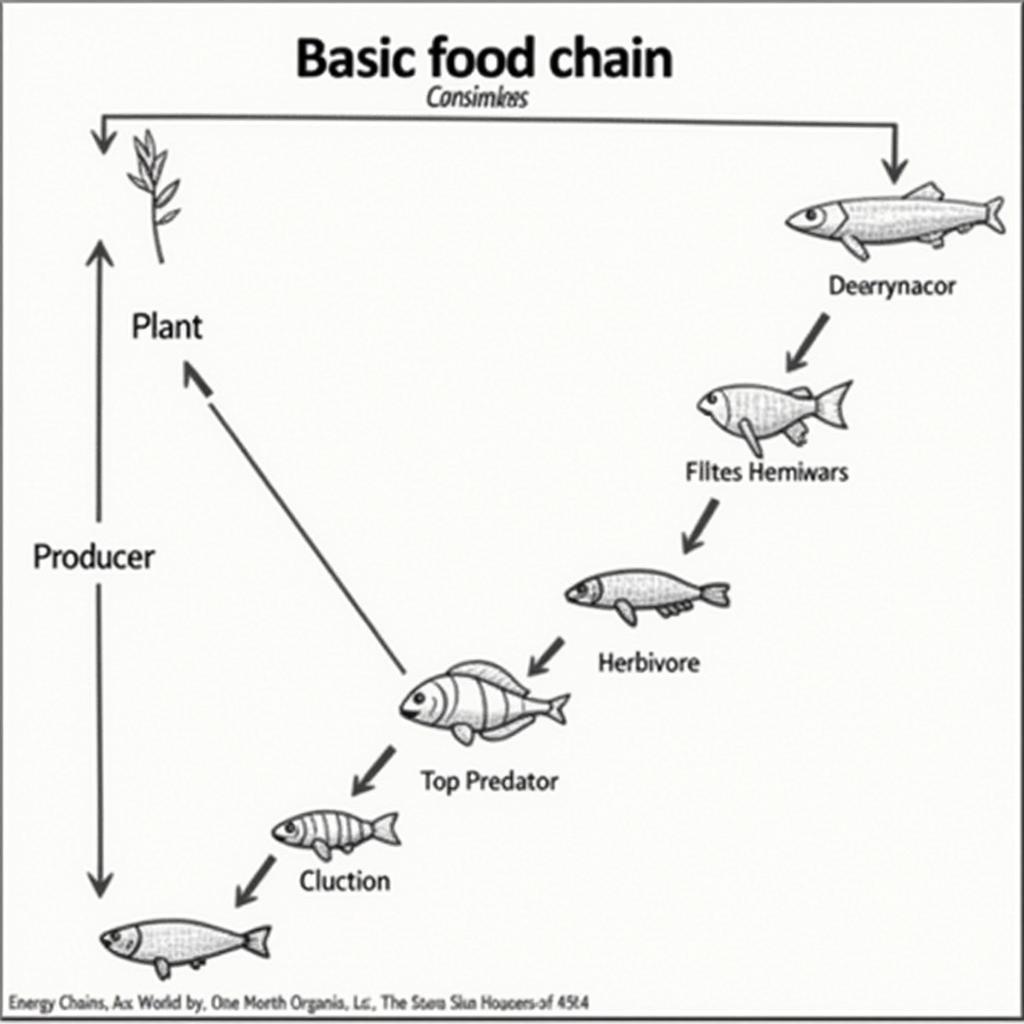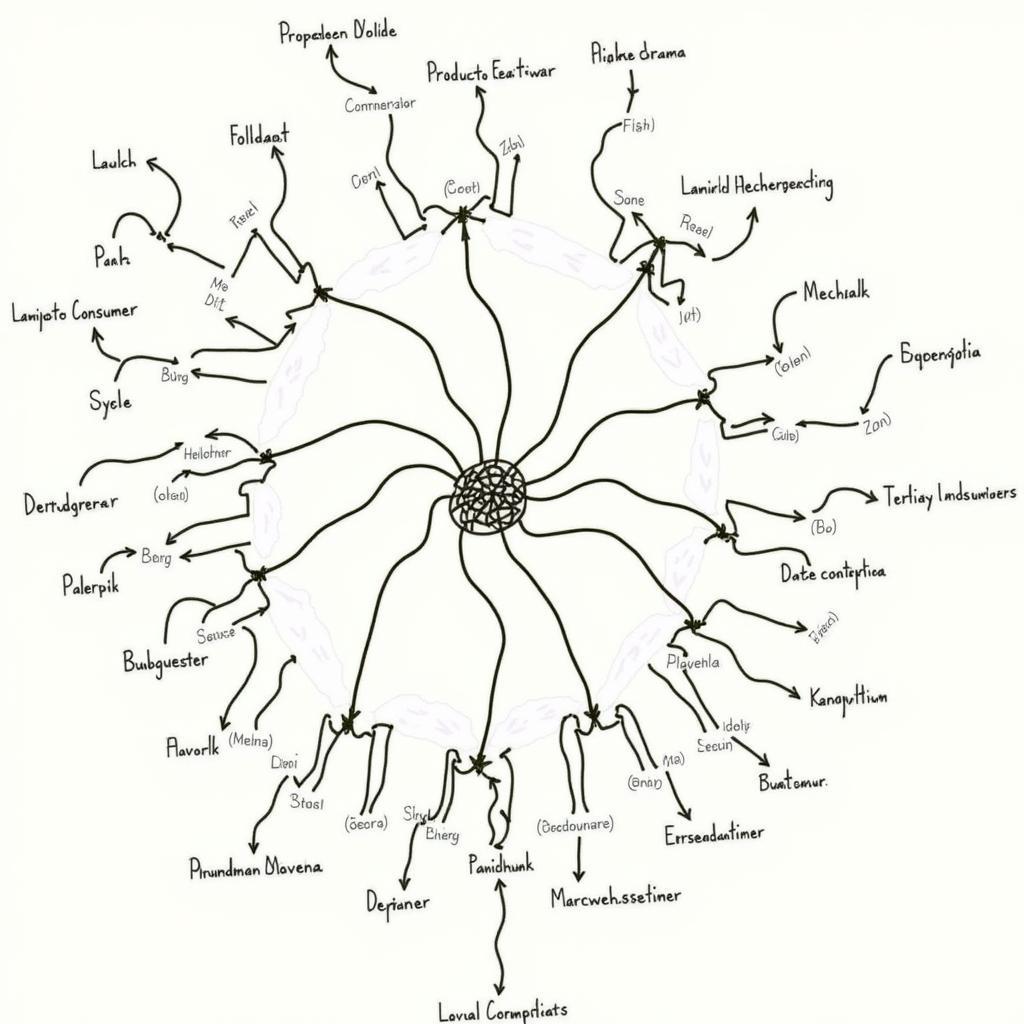Understanding food chains and webs is crucial to grasping how energy flows through an ecosystem. Whether you’re a student tackling a tough assignment or just curious about the interconnectedness of life, this comprehensive guide will equip you with the knowledge to navigate those tricky food chain/webs worksheets and deepen your understanding of these fundamental ecological concepts.
What are Food Chains and Food Webs?
Food chains illustrate the linear transfer of energy from one organism to another. They depict a simplified sequence, like a plant being eaten by a grasshopper, which is then eaten by a frog, followed by a snake, and finally, an eagle. Each organism occupies a specific trophic level, representing its position in the chain.
Food webs, on the other hand, provide a more realistic representation of the complex feeding relationships within an ecosystem. They show how multiple food chains interconnect, highlighting that organisms often consume and are consumed by multiple species. A food web reveals the intricate network of energy flow and the interdependence of various species within a habitat.
Unraveling Food Chain/Webs Worksheet Answers: Key Concepts
To effectively answer questions on food chain/webs worksheets, it’s vital to grasp some core concepts. Producers, like plants and algae, form the base of the food chain, converting sunlight into energy through photosynthesis. Consumers, ranging from herbivores to carnivores and omnivores, obtain energy by consuming other organisms. Decomposers, such as bacteria and fungi, break down dead organisms, returning essential nutrients to the environment. Understanding these roles is crucial for identifying and interpreting the relationships within food chains and webs.
 Food Chain Diagram Worksheet Answer Example
Food Chain Diagram Worksheet Answer Example
Navigating Different Types of Food Chain/Webs Worksheet Questions
Food chain/webs worksheets often present various question types, requiring different approaches. Identifying producers, consumers, and decomposers is a common task. You might also be asked to predict the impact of removing a species from a food web or analyze the flow of energy through different trophic levels. Understanding the interconnectedness of organisms allows you to anticipate the cascading effects of changes within the ecosystem.
 Food Web Complexity Worksheet Answers
Food Web Complexity Worksheet Answers
Common Mistakes to Avoid on Your Worksheets
A common mistake is misidentifying the direction of the arrows in a food chain or web. Remember, the arrows always point from the organism being eaten to the organism that is eating it, indicating the direction of energy transfer. Another pitfall is confusing food chains with food webs. Food chains represent a single linear pathway, while food webs depict the interconnectedness of multiple food chains.
“Understanding the intricacies of food webs is essential for conservation efforts. By analyzing these webs, we can identify keystone species and predict the impact of environmental changes,” shares Dr. Emily Carter, a leading ecologist at the University of California, Berkeley.
Applying Your Knowledge: Real-World Examples
Consider the classic example of a forest ecosystem. Trees are the producers, deer are herbivores consuming the trees, wolves are carnivores preying on the deer, and fungi decompose dead organisms. This real-world scenario helps visualize the concepts and apply them to worksheet questions.
Conclusion: Mastering Food Chains and Webs
Mastering food chains and webs empowers you to analyze ecological relationships and understand the delicate balance of nature. By grasping the core concepts, identifying different question types, and avoiding common pitfalls, you’ll be well-equipped to conquer those food chain/webs worksheet answers and gain a deeper appreciation for the intricate web of life.
FAQ
- What is the difference between a food chain and a food web?
- What is the role of decomposers in an ecosystem?
- What is a trophic level?
- What is a keystone species?
- How does energy flow through a food chain?
- What is the impact of removing a species from a food web?
- How do food chains and webs help us understand ecological balance?
Further Exploration
For more in-depth information, explore these related articles on our website: “The Importance of Biodiversity,” “Understanding Ecosystem Dynamics,” and “The Role of Predators in Maintaining Ecological Balance.”
Need further assistance? Contact us at Phone Number: 02437655121, Email: minacones@gmail.com, or visit us at 3PGH+8R9, ĐT70A, thôn Trung, Bắc Từ Liêm, Hà Nội, Việt Nam. We have a 24/7 customer support team ready to help.